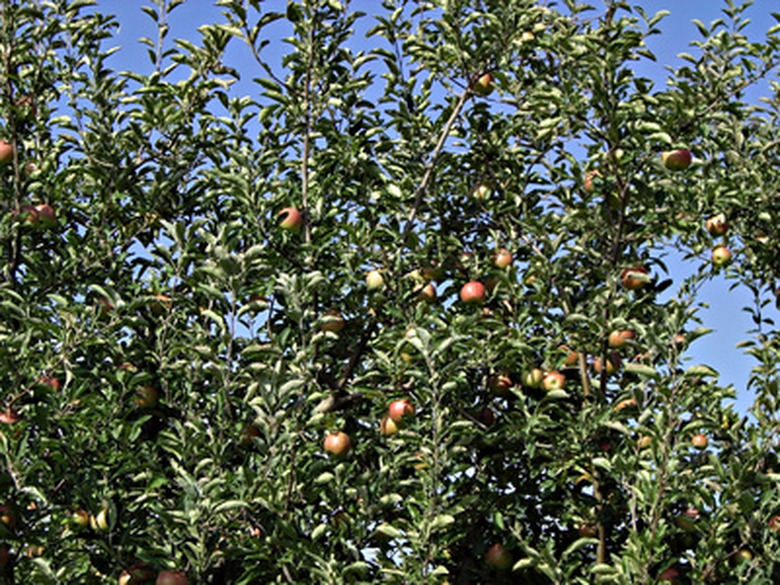Secrets To Growing Fruit Trees Faster
Fruit trees are a wise investment in your home. They provide attractive greenery and shade, and, in time, will produce food. Fruit trees are easy to grow—even in northern climates fruit such as apples do well, due to the length of the winter chill they need to set fruit. Most fruit trees will produce within about three years of planting a sapling. You can ensure that this happens by following a few tips.
Purchase Grafted Trees
Although you can start many types of fruit trees from their seeds, doing this has disadvantages. First, you won't be certain that the fruit your tree produces will be the same as the parent tree, because many varieties are hybrids that do not reproduce "true to type." Grafted trees, on the other hand, combine the best traits of two types of the same tree and can be brought into bearing in 2 or 3 years, according to the University of Minnesota.
- Fruit trees are a wise investment in your home.
- First, you won't be certain that the fruit your tree produces will be the same as the parent tree, because many varieties are hybrids that do not reproduce "true to type."
Buy Varieties Suited to Your Region
Different parts of the country, and the world at large, are conducive to some plants but not to others. Fruit trees are no exception to this rule. For example, if you live in a southern state where the winters are mild, you won't have success growing a stone fruit such as peaches or plums that requires 600 hours or more of temperatures below 45 degrees Fahrenheit, according to the town website of Bainbridge, Georgia. However, many types of fruit trees have been developed that thrive in places with warmer winters. Conversely, many fruit trees will not succeed in areas where the winters are extremely cold.
Choose a Dwarf Variety
Smaller trees often produce fruit sooner than their larger cousins. For example, the dwarf Fuji apple can produce fruit its first year, according to Fast Growing Trees Nursery. This particular apple tree grows to only 15 feet in height and is appropriate for gardens in USDA climate zones 6 through 9. Specialty nurseries prune young trees to encourage extra branches to grow. According to Fast Growing Trees Nursery, "More branches mean more fruit, a healthier tree and faster apple production." They continue by stating that many nurseries sell "whips," which are tall, thin saplings with no lateral branches—these experts conclude that "they can take several years to fruit and will generally be less productive when mature."
- Different parts of the country, and the world at large, are conducive to some plants but not to others.
- However, many types of fruit trees have been developed that thrive in places with warmer winters.
Give Your Tree the Conditions It Needs
When you plant fruit trees in sunny areas that have rich, well-draining soil, they will grow stronger and healthier than trees that you plant in less hospitable environments. Fertilizer is important as well–if you research your particular type of fruit tree, you can learn about the best type of plant food and the frequency at which you should apply it. Keep insect pests under control by treating your tree with an appropriate product for the type of insect as soon as you notice the beginning of an infestation. Also control diseases by pruning off affected branches and possibly using a fungicide or other appropriate product for the specific disease.
